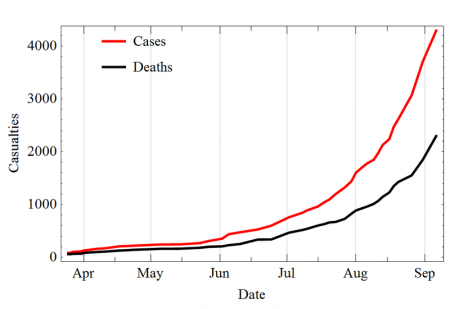The Ebola virus that is causing the raging epidemic in West Africa is famously lethal. In previous outbreaks it has killed as many as 90% of the people it infects. That’s why the figures in World Health Organization’s (WHO’s) latest “Situation Report” look like they might be a rare glimmer of good news. Although the rate of infections is picking up speed at an alarming rate, the report says the fatality rate is 53% overall, ranging from 64% in Guinea to just 39% in Sierra Leone.
But there’s a catch: The apparent low proportion of deaths probably depends more on the way health officials are calculating the number than on the deadliness of the virus—or the quality of care patients are receiving. Indeed, the dramatic increase in cases in recent weeks is one of the main reasons the reported death rate appears to be artificially low.
There are several ways to calculate what officials call the “case fatality rate,” or CFR, of a disease outbreak. One of the simplest is to divide the number of deaths by the number of total cases. That is what WHO does in its recent CFR calculations.
But that method doesn’t take into account that many living patients—recently diagnosed and very ill—will not survive. So it underestimates the death rate. And that effect is exaggerated when an outbreak is expanding quickly.
(Read the rest of the story here…)
